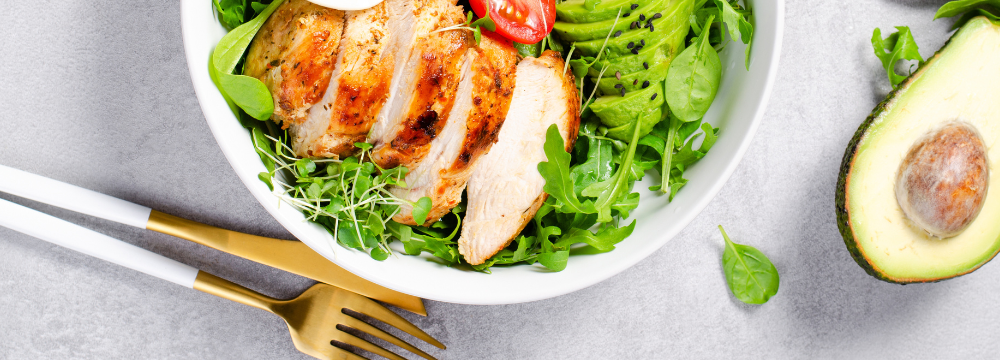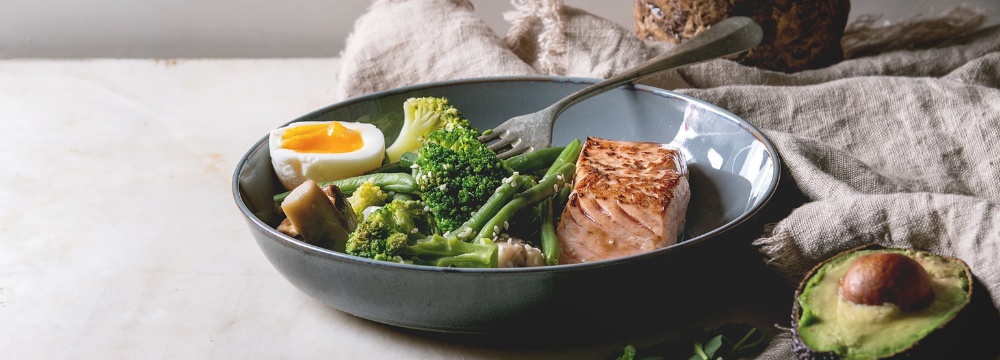
Pink, white, crystalline, or flaky, salt is salt. Right? Maybe… maybe not.
Salt has been blamed for bloating, praised for its preservation properties, and debated by chefs and doctors alike. For something so basic, it gets a lot of attention, influencing flavor, texture, and the way you enjoy food. But does the type of salt you consume matter, especially after bariatric surgery?
We’ll unpack how your body handles sodium, explore some popular types of salt, and polish it off with a bonus fact to add some flavor to your day.
Your Body Needs a Bit of Salt
It’s almost mantric: Cut back on sodium to lower your blood pressure. A substantial body of research also backs it. The Centers for Disease Control and Prevention (CDC) recommends that most adults consume less than 2,300 mg of sodium per day, roughly equal to one teaspoon of salt. However, most Americans eat well beyond that, increasing their risk for hypertension, stroke, and heart disease.¹
When you consume more sodium than your body needs, your kidneys may struggle to eliminate it efficiently. To dilute the excess, your body retains water, increasing blood volume, which can raise blood pressure and cause your heart to work harder. Over time, this strain can contribute to high blood pressure, heart failure, or kidney problems. Some research even suggests that high sodium intake can negatively impact your heart and bones independently of blood pressure.²
Most unprocessed foods, such as produce, some meats, and whole grains, are naturally low in sodium. However, when the bulk of your diet consists of packaged and restaurant foods, excess daily sodium can sneak in too easily. According to the CDC, the most significant sources of sodium, even from the grocery store, include bread, pizza, deli meats, salty snacks, and cheese.³
Hearing what sodium does when we consume too much might put a bad taste in our mouth, but we also need it, at least 500 mg per day, to be exact.2 Salt is a chemical compound of sodium and chloride that we need for controlling the movement of water in and out of cells. It’s also vital for proper nerve signal transmission and muscle contraction, including heartbeats. Both deficiency and excess can lead to serious health problems.
Types of Salt
Now, let’s get to the fun part: exploring the variety of salts available. Whether you’re sprinkling it on avocado toast or seasoning soup, here’s how common salts compare. (Just keep moderation in mind!)
1. Regular Table Salt
This is the salt you see in most saltshakers. Highly refined, table salt is stripped of trace minerals and often blended with anti-caking agents to prevent clumping. It’s also usually iodized, a process introduced in the early 20th century to avoid iodine deficiency and goiter.
Table salt is ubiquitous, appearing in everything from diners to baking recipes, and is a staple on almost every American countertop. If you need iodine in your diet (and most people do), this is a reliable source, but it should be used conservatively. Because it’s finely ground, it packs more sodium into a smaller volume compared to coarser salts. A teaspoon of table salt may deliver more sodium than a teaspoon of flaked or coarse salt – something to consider when you’re watching your intake.
2. Kosher Salt
Kosher salt is coarser and flakier than table salt, with a clean taste and typically no additives. Despite the name, it isn’t necessarily “kosher”- the name comes from its use in koshering meat to draw out blood during the curing process.
This type of salt is used for cooking and seasoning meats, but it usually doesn’t contain iodine, so don’t rely on it for that nutrient – it’s just sodium. A bonus to this type of salt is that its larger crystals mean it’s less dense than finely ground salt. Because of its clean flavor and coarse texture, it’s ideal for dry rubs, roasting vegetables, seasoning pasta water, or sprinkling over meat before grilling.
3. Pink Himalayan Salt
Harvested from ancient sea beds in Pakistan, this pink-hued salt is rich in trace minerals like magnesium, calcium, and iron, which gives it its rosy color. While you may see products labeled as “Himalayan salt” from other countries, these are often imitation products. If it’s not from Pakistan, it’s not truly Himalayan salt. In the culinary world, it’s usually used for finishing dishes or adding visual flair.
Himalayan pink salt pairs well with roasted vegetables, grilled meats, or grain bowls. Although its mineral content doesn’t seem to offer significant health advantages, some people enjoy its slightly earthier flavor.
4. Pickling Salt
Also known as canning salt, this type is entirely free of additives and anti-caking agents, making it ideal for making brines or pickling where cloudiness is a no-go. Brines help tenderize meats and infuse them with flavor before cooking, making this salt especially handy for prepping poultry or lean cuts.
Because it’s pure sodium chloride, it’s potent in flavor, so be careful if you use it for anything other than pickling. You also need to be cautious about storage, as it doesn’t contain the anti-caking agents that table salt does, which can cause it to clump in humid conditions.
5. Sea Salt
Evaporated from seawater, sea salt retains trace minerals depending on the water source. These minerals can lend subtle flavor differences depending on where they’re harvested. For example, French fleur de sel is harvested by hand from shallow salt ponds, and some people think it has a “bright” taste. Celtic sea salt, by contrast, is more mineral-rich and slightly gray with a deeper, brinier flavor.
The culinary application of this type of salt is in specialty recipes, where it provides texture and more depth than traditional table salt offers. Sprinkling it over fresh vegetables, fish, or lean grilled meats just before serving heightens the natural character of these healthy foods.
6. Black Salt (Kala Namak)
This volcanic rock salt from South Asia has a distinct sulfuric aroma thanks to its natural mineral content. It’s a staple in Indian cuisine and is often used in vegan recipes to mimic the taste of eggs.
Foods you’ll find this one in include chaats, chutneys, and tofu scrambles. According to Ayurvedic medicine, it may offer digestive benefits, though scientific backing is limited. This one is best used sparingly since its pungent flavor can easily overpower a dish.
When it comes to nutrition, the differences between salts are minimal. Be sure to read the nutrition labels to determine the amount of sodium per serving, as the amounts may vary slightly. And while you’re in the kitchen, have fun with it – try making the same dish using two different salts and see how their flavor profiles compare. Who knows? It might be just the thing that turns the task of overhauling your diet into something a little more exciting!
And Now for a Little History Flavor…
Salt has shaped trade routes, launched wars, and preserved entire food cultures – but did you know it also gave us a common expression?
The saying “worth your salt” dates back to ancient Rome. Roman soldiers were sometimes paid in salt or given a salt allowance, known as a salarium, from which the word “salary” originates. Salt was incredibly prized at the time, not just for flavor but for preserving food, making it an indispensable commodity.
So, when someone is “worth their salt,” it means they’re valuable or competent, just as a good worker was worth the salt they were paid.
And if you’re here, reading about what’s on your plate, you’re already worth your salt, taking the time to understand your food, make intentional choices, and stay on track with your health goals. At SAMPA, we know it isn’t easy, but it’s worth taking control of your health.
References:
- CDC. (2024). About Sodium and Health. CDC. https://www.cdc.gov/salt/about/index.html.
- Harvard T.H. Chan School of Public Health. (2023, March). Salt and Sodium. The Nutrition Source. https://nutritionsource.hsph.harvard.edu/salt-and-sodium/.
- CDC. (2024). About Sodium and Health. CDC. https://www.cdc.gov/salt/about/index.html.










